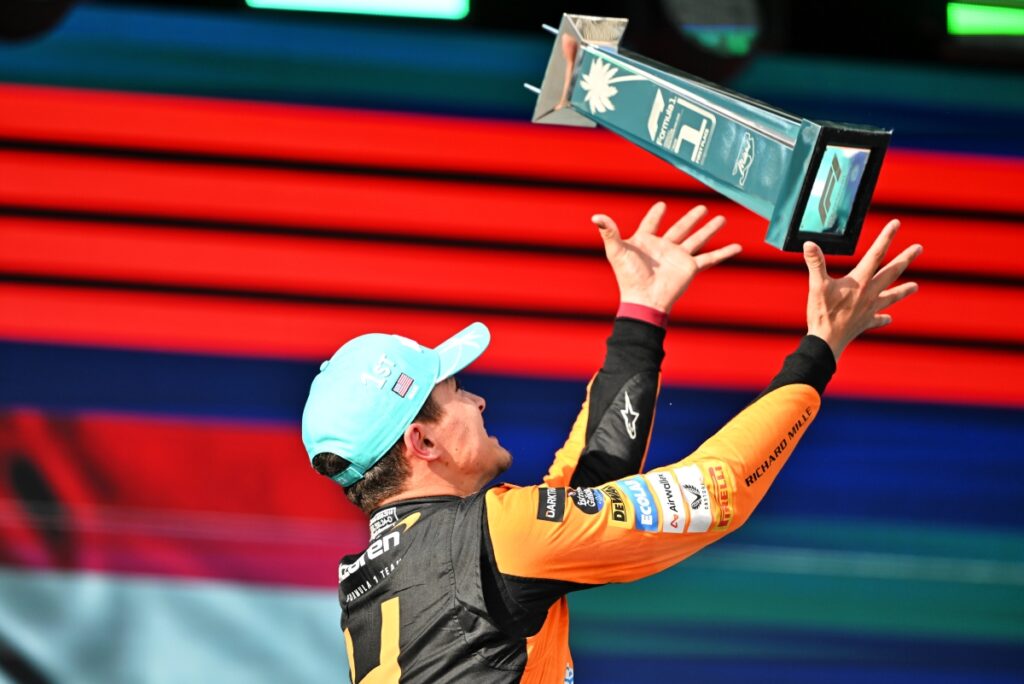How McLaren F1 Flipped Fate: The Inside Story of Norris's Unlikely Miami Triumph

The whispers of Formula 1's intricate strategies and wheel-to-wheel combat often leave fans and pundits alike pondering the myriad 'what ifs' in racing. At the heart of such a debate sits McLaren Team Principal Andrea Stella's assertion that Lando Norris was on track to clinch his first F1 victory at the Miami Grand Prix, Safety Car or not. This belief holds a tale of strategy, skill, and a bit of serendipity, proving the adage that in racing, anything can happen.
During the race's 29th lap, the unforeseen intervention of the Safety Car redefined the competitive landscape. Yet, Stella firmly believes that Norris's triumphant performance wasn't merely a stroke of luck. Instead, it was the culmination of strategic prowess and Norris's impeccable drive. Despite slipping to sixth place at the outset, Norris and his team showcased a masterclass in patience and precision—an extended first stint on worn rubber that kept him competitive even as rivals peeled off for fresher tyres.
The crash between Logan Sargeant and Kevin Magnussen provided an unexpected advantage, but McLaren's meticulous plan was already unfolding. Stella reminisced about seeing early race dynamics that hinted at their hidden edge. The narrative wasn't just about adapting to race conditions but also about asserting a pace that could challenge the leading pack.
"In the tumultuous symphony of F1 racing, each decision echoes down the laps," Stella noted, emphasizing how early race observations, like Piastri's move on a Ferrari and Verstappen's pace, were clues to an unfolding strategic masterpiece. Norris's capability to maintain competitive lap times on older tyres was a gambit, predicated on building a gap that would later empower them with fresher tyres towards the end's sprint.
Indeed, the Safety Car played its part in Norris's narrative, offering a chance to pit without ceding ground. However, Stella underlined the team's robust position prior to this twist of fate. Their race was one of calculated risk, leveraging Norris's comfort and the car's pace to stretch their stint, ideally placing them for a robust challenge in the race's concluding laps.
Not just a story of chance, Stella's reflections offer a peek into the strategic battleground that is F1. "We were prepared to exploit any opportunity," Stella affirmed, highlighting the dual benefits of their strategy: the potential advent of a Safety Car and the tactical advantage of fresher tyres for the final onslaught. This perspective punctuates the belief that Norris's victory was as much an orchestrated feat as a fortuitous turn of events.

As the dust settles on the Miami GP, Stella’s insights reveal not just the mechanics of a pitstop strategy, but the intricate dance of foresight, skill, and sometimes, fate, that defines Formula 1’s apex competition. Norris's victory is emblematic of McLaren’s strategic finesse and his rising status in the drivers' ranks—a narrative that exhilaratingly reaffirms, in the world of Formula 1, the race is never over till it's over.